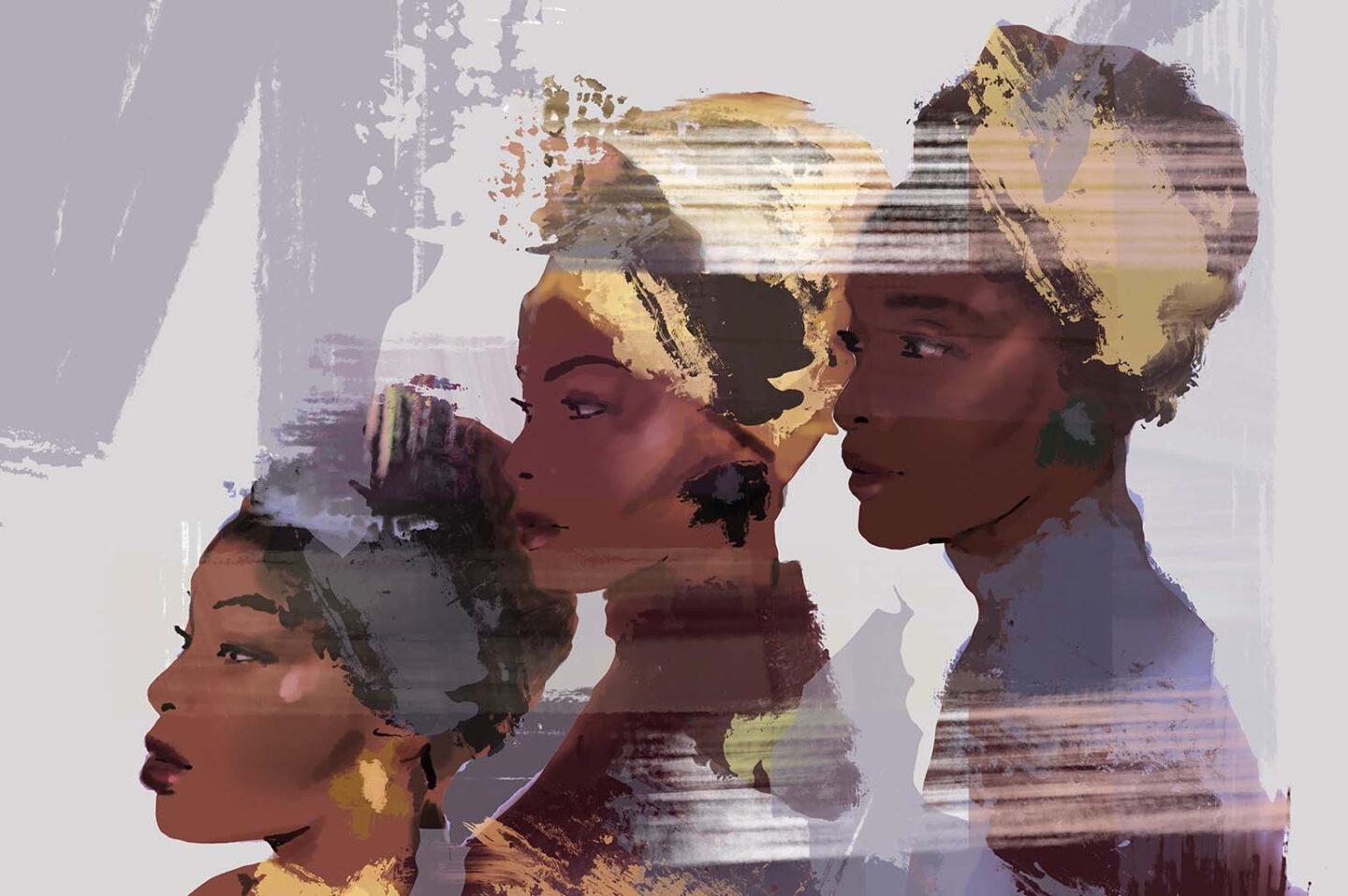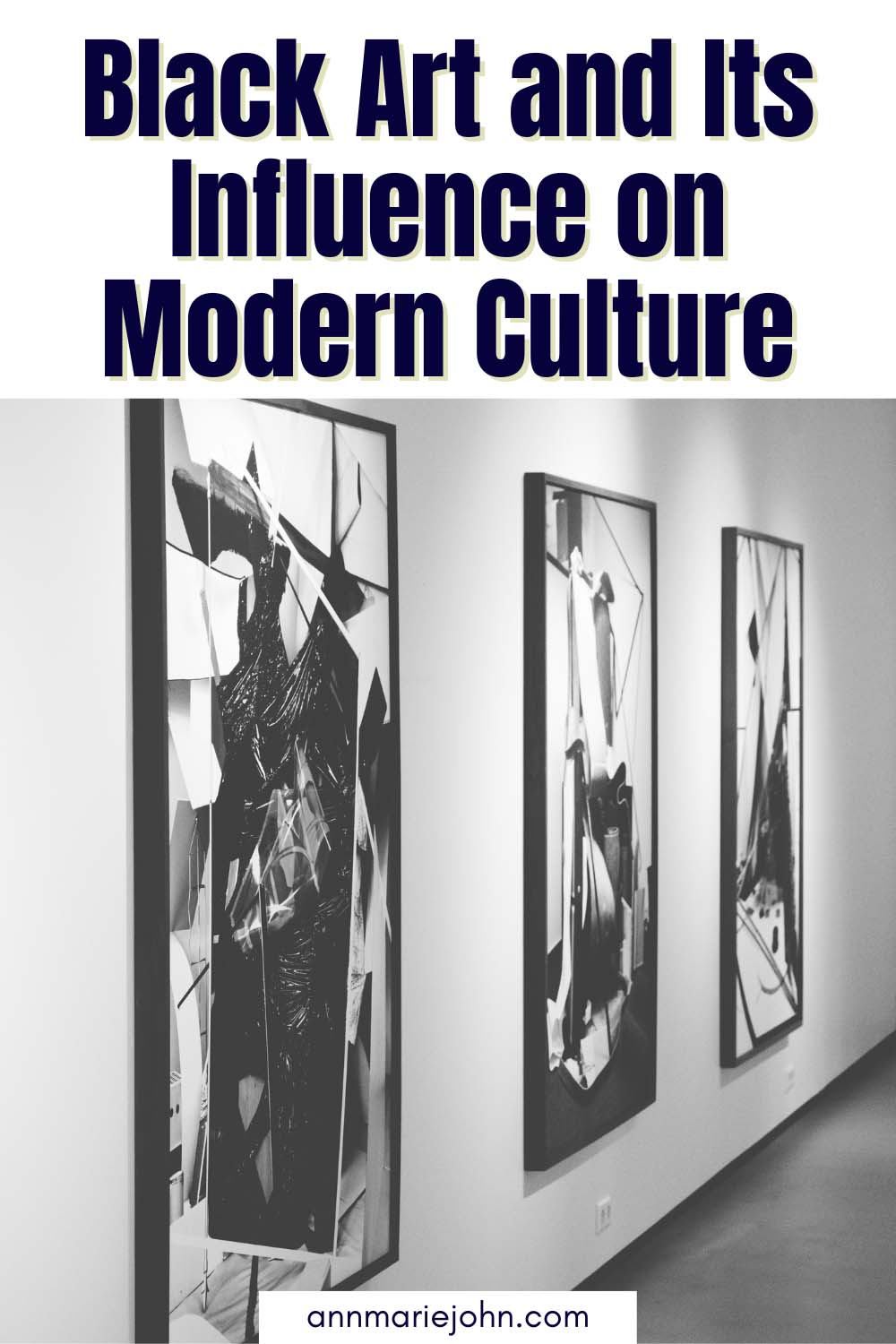Explore the vibrant world of black art, from the Harlem Renaissance to contemporary masterpieces, and how it continues to shape and inspire modern culture across various mediums.

In the rich tapestry of human expression, art has always played a pivotal role in reflecting and shaping society. Among the diverse array of artistic movements, black art stands as a powerful force that has significantly impacted and influenced modern culture. From the Harlem Renaissance to contemporary masterpieces, the dynamic and vibrant world of black art has left an indelible mark on the artistic landscape. This article delves into the historical roots, key movements, and the enduring impact of black art on various aspects of contemporary culture.

I. The Roots of Black Art:
A. Harlem Renaissance:
The Harlem Renaissance, a cultural, social, and artistic explosion that took place in the 1920s, was a pivotal moment for black art. Emerging in the heart of New York City’s Harlem neighborhood, this movement was a celebration of African American culture through literature, music, and the visual arts. Artists like Aaron Douglas and Jacob Lawrence created works that celebrated the resilience and creativity of black people. The Harlem Renaissance set the stage for the ongoing exploration of black identity and expression in the arts.
B. African Influences:
Black art draws deeply from African artistic traditions, with a rich history of vibrant colors, intricate patterns, and storytelling. The use of symbols and motifs from African heritage adds a unique and powerful dimension to black art, creating a visual language that resonates across cultures. Artists like Wangechi Mutu and El Anatsui continue to infuse their work with African influences, bridging the gap between the past and the present.
II. Key Movements in Black Art:
A. Black Arts Movement:
The 1960s and 1970s saw the rise of the Black Arts Movement, a cultural revolution that sought to empower black communities through artistic expression. Spearheaded by influential figures like Amiri Baraka and Romare Bearden, this movement encouraged artists to explore their heritage and address social and political issues. The Black Arts Movement laid the foundation for a more inclusive and diverse artistic landscape, challenging traditional norms and fostering a sense of pride and identity.
B. Afrofuturism:
In recent years, Afrofuturism has emerged as a powerful and influential movement within black art. Rooted in science fiction and fantasy, Afrofuturism imagines a future where black people play central roles, challenging conventional narratives and envisioning a more inclusive world. Artists like Octavia Butler and Wangechi Mutu have embraced Afrofuturist themes, using their work to explore the intersection of technology, culture, and identity.
III. Black Art Across Mediums:
A. Visual Arts:
Black artists have made significant contributions to the visual arts, challenging conventions and redefining artistic norms. From the powerful portraits of Kehinde Wiley to the thought-provoking installations of Kara Walker, black artists continue to push boundaries and contribute to the ever-evolving world of contemporary art. The visual arts provide a platform for exploring the complexities of race, identity, and social justice, inviting viewers to engage in critical conversations.
B. Literature:
Black literature has been a cornerstone of cultural expression, with writers like Toni Morrison, James Baldwin, and Maya Angelou creating timeless works that explore the black experience. These literary masterpieces serve as a source of inspiration and reflection, contributing to a broader understanding of the complexities of identity and culture.
C. Music:
The influence of black art extends seamlessly into the realm of music. Jazz, blues, hip-hop, and other genres rooted in African American traditions have shaped the global musical landscape. Artists like Miles Davis, Nina Simone, and Kendrick Lamar use their music to address social issues, creating a sonic tapestry that resonates across cultures and generations.
IV. Contemporary Perspectives:
A. Representation in the Art World:
While progress has been made, challenges persist in achieving equitable representation for black artists within the art world. Initiatives like the Black Art Futures Fund and increased awareness of the need for inclusivity aim to address these disparities. The ongoing efforts to amplify black voices and perspectives in the art world are crucial for fostering a more diverse and vibrant creative community.
B. Social Media and Accessibility:
The digital age has provided new platforms for black artists to showcase their work and connect with audiences globally. Social media platforms like Instagram and Twitter have become essential tools for artists to share their creations, build communities, and challenge traditional gatekeeping within the art world. This increased accessibility has empowered artists to reach a wider audience and has democratized the art-sharing process.
V. Black Art and Social Justice:
One of the defining features of black art is its inherent connection to social justice issues. Throughout history, black artists have used their creative voices to address systemic racism, inequality, and injustice. The visual arts, in particular, have served as a powerful medium for activism and advocacy. Artists such as Faith Ringgold and Jean-Michel Basquiat have employed their work to confront societal issues, foster dialogue, and inspire change.
In recent years, the Black Lives Matter movement has further underscored the importance of art in the pursuit of social justice. Murals, graffiti, and other public art forms have become powerful tools for expressing solidarity, mourning, and demands for change. Black artists continue to play a vital role in shaping the narrative around racial injustice and amplifying the voices of marginalized communities.
VI. Black Art and Cultural Identity:
The exploration of cultural identity is a recurring theme in black art. Artists often draw from their own experiences and cultural backgrounds, contributing to a rich tapestry of narratives that celebrate diversity and challenge preconceived notions. Through the visual arts, literature, and music, black artists have shared stories of resilience, pride, and the complex interplay of identity.
Kerry James Marshall, known for his powerful depictions of black life, explores themes of identity and representation in his paintings. His work challenges traditional Eurocentric standards of beauty and emphasizes the importance of diverse representation in art. By doing so, Marshall contributes to a broader conversation about the significance of cultural identity within the artistic realm.
VII. The Global Impact of Black Art:
While rooted in African American experiences, black art transcends geographical boundaries and has a global impact. Artists from the African diaspora, whether residing in the Americas, Europe, or Africa itself, contribute to a shared narrative that resonates with people around the world. The universal themes of identity, resilience, and cultural pride depicted in black art speak to the common human experience, fostering cross-cultural understanding and appreciation.
The influence of black art can be seen in the global popularity of genres like hip-hop and the widespread recognition of artists such as Basquiat and Yinka Shonibare. International exhibitions and collaborations further showcase the interconnectedness of artistic expressions across different regions. In this way, black art serves as a bridge, connecting communities and fostering a sense of shared humanity.
VIII. Future Trends and Innovations:
As we look ahead, the trajectory of black art appears poised for continued innovation and influence. The intersection of technology and art presents new opportunities for experimentation and expression. Virtual reality, augmented reality, and other emerging technologies provide platforms for artists to push boundaries and engage audiences in novel ways.
Furthermore, the ongoing efforts to address diversity and inclusion within the art world are likely to lead to more equitable opportunities for black artists. Initiatives promoting representation, funding, and educational support contribute to a more inclusive and dynamic creative landscape. The democratization of art through digital platforms and social media also ensures that a broader range of voices can be heard and appreciated.
IX. Conclusion:
In conclusion, the influence of black art on modern culture is profound and multifaceted. From its roots in the Harlem Renaissance to the contemporary expressions of Afrofuturism, black art has continually shaped and enriched the global artistic landscape. Through visual arts, literature, music, and activism, black artists have contributed to critical conversations about identity, social justice, and cultural representation.
While acknowledging the progress made, it is essential to continue advocating for the equitable representation of black artists within the art world. The ongoing efforts to address systemic issues and promote inclusivity will undoubtedly contribute to a more diverse and vibrant creative community.
As we celebrate the legacy of black art, we must also recognize its ability to inspire change, challenge norms, and foster a deeper understanding of the human experience. The vibrant world of black art is not merely a reflection of the past; it is an ever-evolving force that continues to shape the present and guide us toward a more inclusive and enlightened future.
